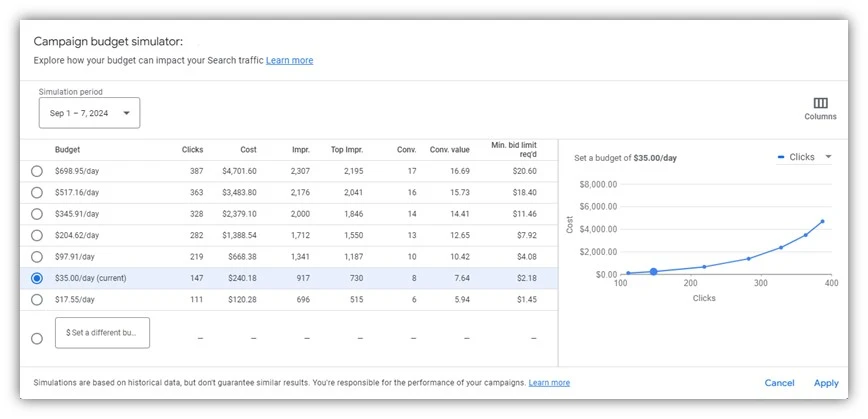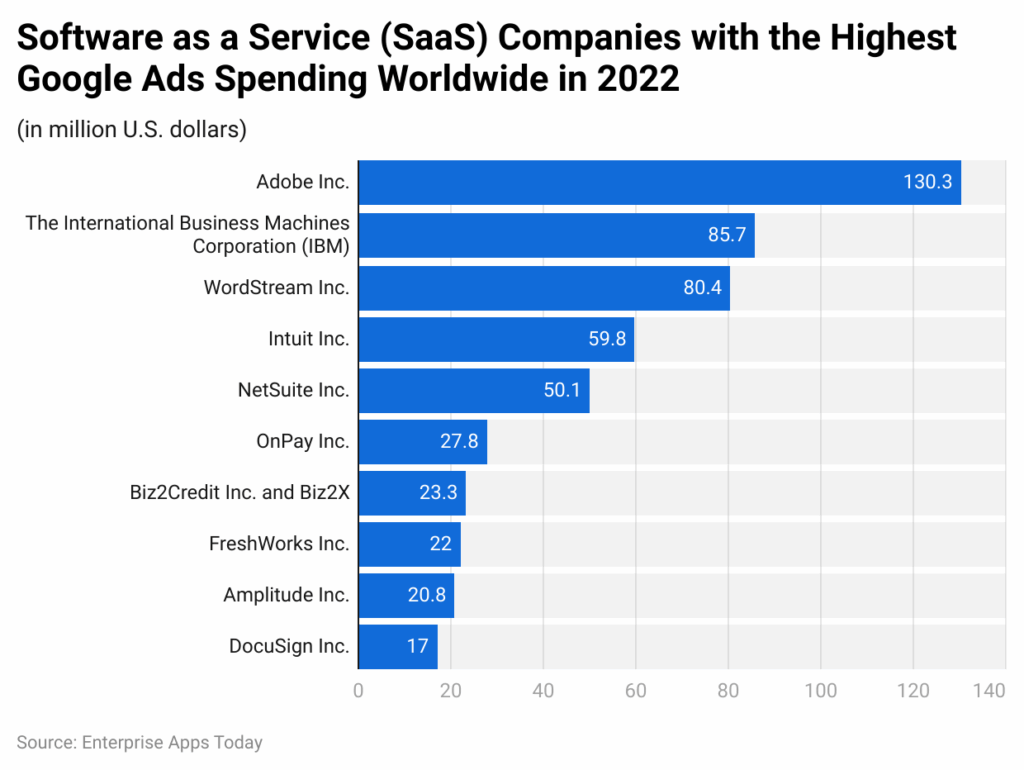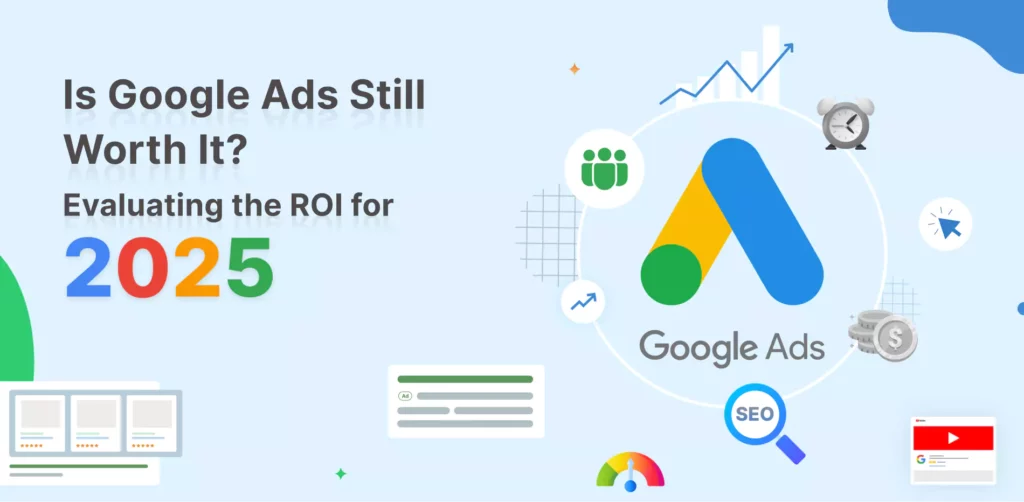How much do companies spend on Google Ads

Have you ever wondered how much do companies spend on Google Ads to achieve success? This is not a simple figure, as it’s not a fixed number. Each company’s advertising budget is a complex figure based on its goals, industry, and competitors. This article from Rentads will delve into answering the question of how much do companies spend on Google Ads and provide key factors to help you shape the most effective spending strategy for your own business.
How much do companies spend on Google Ads

A company’s budget can range from a few million VND for a small business to billions of VND per month for multinational corporations. To better understand this, we need to analyze costs based on each industry, business size, and other contributing factors.
Average advertising cost
The cost of Google advertising varies significantly depending on the level of industry competition. In high-profit and highly competitive sectors, the cost per click (CPC) can be very expensive. For instance, industries such as Legal, Finance, and Real Estate often have very high CPCs, sometimes reaching tens or even hundreds of thousands of VND per click. Conversely, less competitive industries like apparel, food, or local services often have a much lower CPC. The average monthly cost also varies accordingly, from tens of millions of VND for a small shop to hundreds of millions of VND for a mid-sized e-commerce company.
Analysis of Advertising Budgets
Larger companies often don’t just focus on one type of advertising; they use huge budgets to run integrated campaigns across multiple Google platforms. They spend heavily on Search Ads to dominate the top positions for “golden” keywords, while also investing in Display Ads and YouTube to build broad brand recognition. The monthly budget for these corporations can reach tens of billions of VND. They have a team of experts to continuously analyze data, optimize campaigns, and test new strategies to ensure every dollar spent delivers the highest possible return. Analyzing the budgets of these “big players” shows that they aren’t just buying ad space; they’re also investing in market research, customer behavior, and technology to maintain a competitive edge.
Key Factors in Google Ads Spending
In addition to industry and business size, there are three main factors that determine advertising costs:
- Keyword Competition: This is the most important factor. The more popular and high-converting a keyword is, the more competitors there will be, leading to an increase in bids.
- Quality Score: Google always prioritizes high-quality ads. An ad with a good Quality Score will be shown in a higher position at a lower cost. This score is calculated based on the relevance of the ad, keywords, and the landing page.
- Targeting Strategy: Costs also depend on the audience you want to reach. Targeting a small geographical area, a specific age group, or an audience with niche interests can help you save money, but it can also increase the CPC if that customer group is highly competitive.
Some Tools for Budget Management
To effectively manage your Google ad budget, understanding the available tools and reports not only helps you predict costs but also provides valuable data to optimize your campaigns, ensuring every dollar spent delivers the highest possible return.
Using Google Keyword Planner
Before starting any ad campaign, the Google Keyword Planner is an indispensable companion. It’s a free tool that lets you research keywords and estimate costs. By entering keywords related to your products or services, you’ll get information on the average monthly search volume, competition level, and, most importantly, estimated top-of-page bids.
Analyzing Ad Performance Reports
Once a campaign is launched, analyzing performance reports is a core step for budget management. The Google Ads platform provides a detailed reporting system, allowing you to track every metric from a high level to a granular level. You can see the total number of Clicks, Impressions, the average cost per click (CPC), and, most importantly, your conversion rate. By analyzing these reports, you’ll know which keywords, ads, or audiences are performing well.
Comparing Costs with Competitors
Understanding what your competitors are doing is also an important part of budget management. While you can’t directly see how much your competitors are spending, third-party keyword and ad analysis tools can provide estimates on their bids, ad positions, and the keywords they’re targeting. This information gives you an overview of the competition level in the market and helps you adjust your strategy. For example, if you see a competitor focusing on a specific set of keywords, you might choose less competitive niche keywords (long-tail keywords) to optimize costs, or invest heavily in core keywords to secure a better position. The purpose of comparison isn’t to copy, but to learn and make smarter decisions about your budget, making your campaign more effective.
The Importance of ROI in Google Ads

When it comes to advertising on Google, just looking at the cost per click (CPC) or the number of clicks is not enough. The core factor that determines the long-term success of a campaign is its ROI (Return on Investment). Instead of asking, “How much did I spend?”, the right question is, “How much profit did each dollar I spend bring back?” Understanding and optimizing your ROI is the key to turning advertising from a cost into a profitable investment.
Calculating Return on Investment (ROI)
ROI is a simple yet incredibly powerful economic indicator that shows how much you get back from the money you’ve spent. The formula for calculating ROI in advertising is quite basic:
ROI = (Total Revenue – Total Ad Spend) / Total Ad Spend
Example: If you spend 10,000,000 VND on advertising and generate 50,000,000 VND in revenue, your ROI would be (50,000,000 – 10,000,000) / 10,000,000 = 4. This means that for every 1 VND spent on advertising, you earned 4 VND in profit. Calculating your ROI helps you make smarter decisions, such as increasing the budget for high-ROI campaigns or adjusting/stopping campaigns with a low ROI.
Measuring Advertising Beyond Cost
Measuring ad effectiveness goes beyond just financial ROI. Google Ads allows you to track various types of conversions, providing a more comprehensive way to evaluate performance. In addition to online orders, you can also measure:
- Phone Calls: Customers click on the phone number in the ad to call directly.
- Contact Form Submissions: Interested users submit their information on your website.
- App Downloads: App installs from an ad.
- Store Visits: Measures the number of customers who visit the physical store after seeing an online ad (Local Ads).
Tracking these types of conversions gives you a complete view of how your ads are impacting your business goals. For example, a campaign might not generate a lot of direct revenue, but it could create hundreds of high-quality leads through contact forms, which is also a huge success.
Long-Term Benefits of Investing in Google Ads
Investing in Google Ads not only brings short-term revenue but also builds long-term benefits for your business. When you run ads, your brand will frequently appear in front of potential customers, which helps increase brand awareness and build credibility. Consistent traffic from ads also contributes to improving your SEO metrics, as Google often considers user behavior on your website for ranking purposes. Furthermore, the valuable data gathered from your ad campaigns (such as effective keywords, user behavior, and target audience) can be used to refine your future marketing strategy, not only on Google Ads but on other channels as well.
Contact Info
You need a Facebook advertising account but don’t know any reputable provider. Coming to Rentads is where you will experience what you need google account for rent prestige, high trust, and professional consulting and service support for customers.
Frequently Asked Questions
Google Ads is a tool that helps you reach potential customers, but it does not guarantee revenue. The final effectiveness depends on many factors, such as the quality of your product or service, the user experience on your website, and your sales strategy. Advertising brings customers to your “store,” but whether they make a purchase is another matter entirely.
Although Google has powerful algorithms to detect and refund fraudulent clicks, you can still protect yourself. Be sure to regularly monitor your click reports and use third-party tools to block suspicious IP addresses.